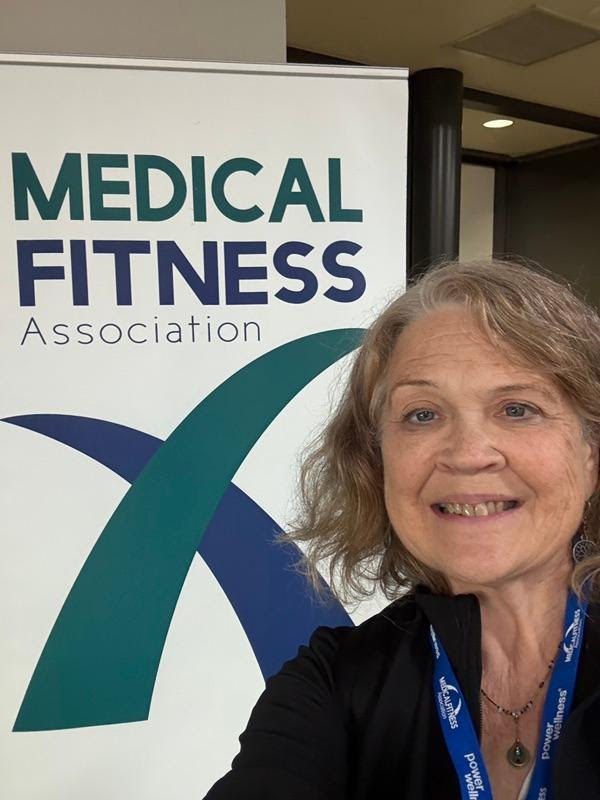Why Strength, Not Steps, Predicts How You’ll Age
Last week at the Medical Fitness Association annual conference, I had the privilege of hearing some of the newest insights in fitness — especially around aging and wellness.
Yes, I was also there sharing my own findings about how life events and medical procedures derail our ability to move freely. (If you missed it, I wrote more about that in a recent blog post.)
One Theme Was Clear: Strength and Power Are Critical to Well-being
What struck me most from the conference was how strong and consistent the research is: strength and power — not just flexibility or endurance — are what allow us to remain independent as we age.
The evidence isn’t new. There are studies going back more than 20 years showing that strength and power predict how well we move, recover, and live.
Yet, the stereotype still persists — pink dumbbells, chair yoga, and a few machine exercises as “enough” for the over-60 crowd. It’s time for a make-over in how we think about aging bodies, beginning in mid-life!
Doing the Hard Work — Daily and Weekly
Here’s the bottom line: we all need to move our bodies more than from bed to car to desk to couch.
7,000 steps a day seems to be the magic minimum for health.
Two or three sessions a week of strength training seems to be the magic minimum for independence. The key is to do enough for a challenge, but without leaving you sore — and then you’re building real resilience!
Our bodies adapt to routine. I’ll admit — I have mine, too! The familiar routine can be done without much thought or stress, and still feel like an accomplishment.
But to build and maintain strength, muscles need variety and stress. Different types of load and movement patterns target different fibers and energy systems, all essential to our long-term function.
A Smarter Framework for Strength Training
Progressive overload — the art of safely pushing yourself — is key to improvement! After all, we want to make sure the time and effort we put in result in the strength and balance for the activities we enjoy.
But where’s the line between “enough” and “too much”?
Jeff Young, EdD, MS, CSCS, EIM (CUNY) shared a framework developed through research that’s now considered a standard of care for older adults: a 12–16 week progressive plan divided into four tiers to increase your strength. (He really needs a memorable name for the program lol.)
Here’s how it works:
- Each tier lasts 3–4 weeks, then you move to the next.
- After Tier 4, take a recovery week, then begin again at Tier 1.
- Each exercise you do should relate to at least one of the basic movements of life — push, pull, squat, lift and directional movement. If you’re not sure what specific exercises to include in your plan, consult an exercise professional. They are available online and at local fitness centers.
Tier progression:
- 12–15 exercise reps with comfortable resistance
- 10–12 exercise reps with increased resistance
- 8–10 exercise reps with additional resistance
- 6–8 exercise reps with maximal resistance (safely)
After a week for recovery, begin again.
(Tip: If you work with an exercise professional, ask them to help you determine your resistance levels for each tier.)
I’m personally shifting my own workouts to follow this model. It’s structured, research-based, and allows steady gains without burnout. I’ll report back in a few months!
“It Saddens Me to See the Aging Process Win”
— Dr. Aaron Aslakson, PhD, Professor of Exercise Science, Crown College, MN
When I heard Dr Aslakson say this, I thought to myself, “That’s why Bridging® resets are so important!”
The Bridging resets clear up the muscle coordination issues from events in your life — the old injuries, surgeries, and hidden muscle compensations. These physical traumas each disrupt your muscles’ ability to work well. They can also prevent you from building or maintaining the strength you’re working so hard on.
Even the best plan can feel impossible if your body isn’t moving as it should. Yet, doing nothing allows the aging process to win sooner.
You Don’t Have to “Push Through”
If your body feels stiff, unsteady, or resistant to progress, there’s another factor to consider — it’s disconnection. With Bridging, the disrupted muscle relationships can be reset, helping your workouts feel easier with faster progress.

